
Image: Rob Schultz/IDG
In 2024, there’s no reason you can’t have a wireless keyboard anymore. From the most complex mechanical boards to the sleekest designer sets to the flashiest gamer machines, and everything in between, there are plenty of options for wireless excellence. That even includes keyboards for budget buyers — you can find a great pick in every category for well under three-digit prices.
We’ve spent hours and hours using each model, banging away on our reviews, surfing the web, and keeping up on social media to bring you a list of the very best wireless keyboards around. For example, the Logitech Wave Keys isn’t our pick for the best wireless ergonomic keyboard, even though it’s a fairly good option and a great value.
While there’s no one-size-fits-all keyboard, our recommendations aim to help you make an informed decision based on your own personal needs. After you’ve perused our best picks, be sure to check out our buying advice at the end to help you learn what to look for when shopping for a wireless keyboard.
Our latest wireless keyboard review is the niche but expensive Happy Hacking HHKB Studio. For more tetherless convenience, see our roundup of the best wireless mice.
Logitech MX Keys S Wireless Keyboard – Best overall wireless desktop keyboard
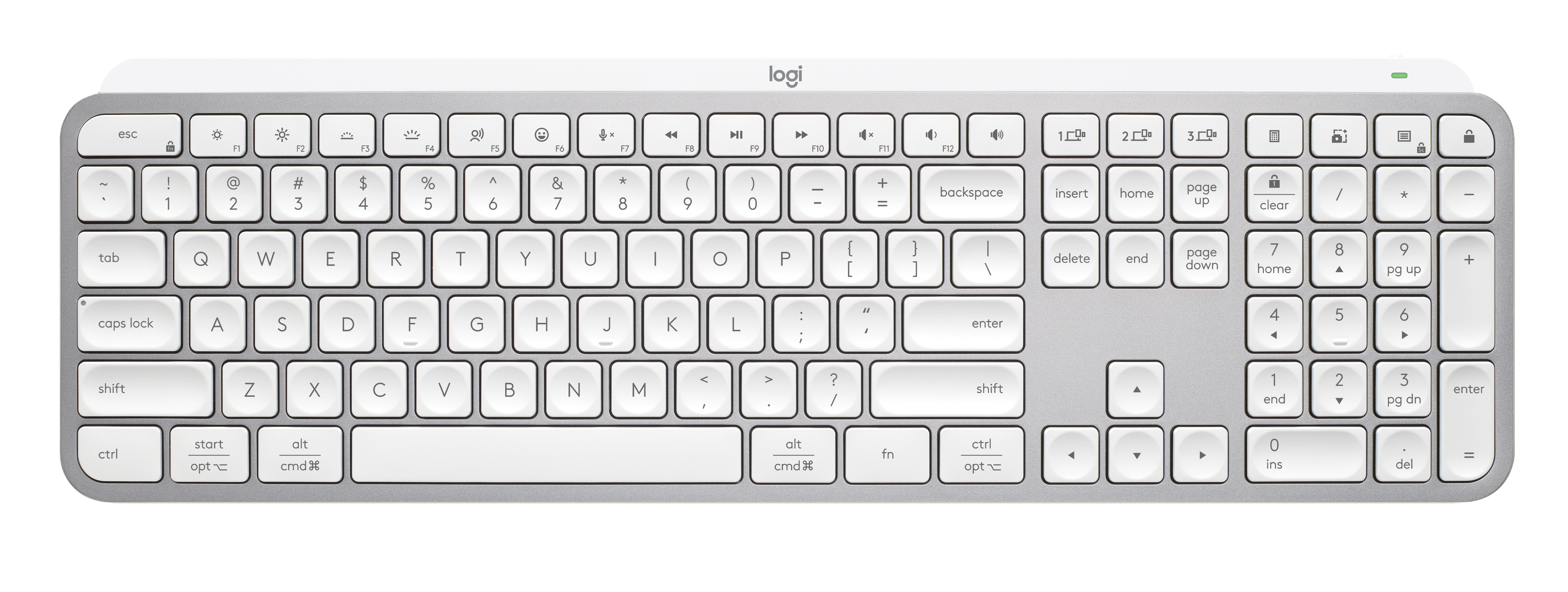
Pros
- Great typing experience
- Customizable keys
- Long battery life
- Auto-dimming backlight
Cons
- No height adjustment
- Wireless can get choppy in crowded environments
Logitech’s top-of-the-line keyboard design returns in an S variant, this time with an updated Bolt multi-device receiver and new a new auto-adjusting backlight feature. The typing experience is as good as it was in the original model, and it’s even a tiny bit cheaper, so this upgrade is a win-win if you like your keyboards thin and stylish. Just be aware that dozens of Bluetooth devices in the vicinity might bog it down. If you prefer your Logitech boards a little more clicky-clacky, check out the MX Mechanical variant.
Read our full
MX Keys S Keyboard review
Logitech MK540 Advanced Wireless Keyboard and Mouse Combo – Best value proposition
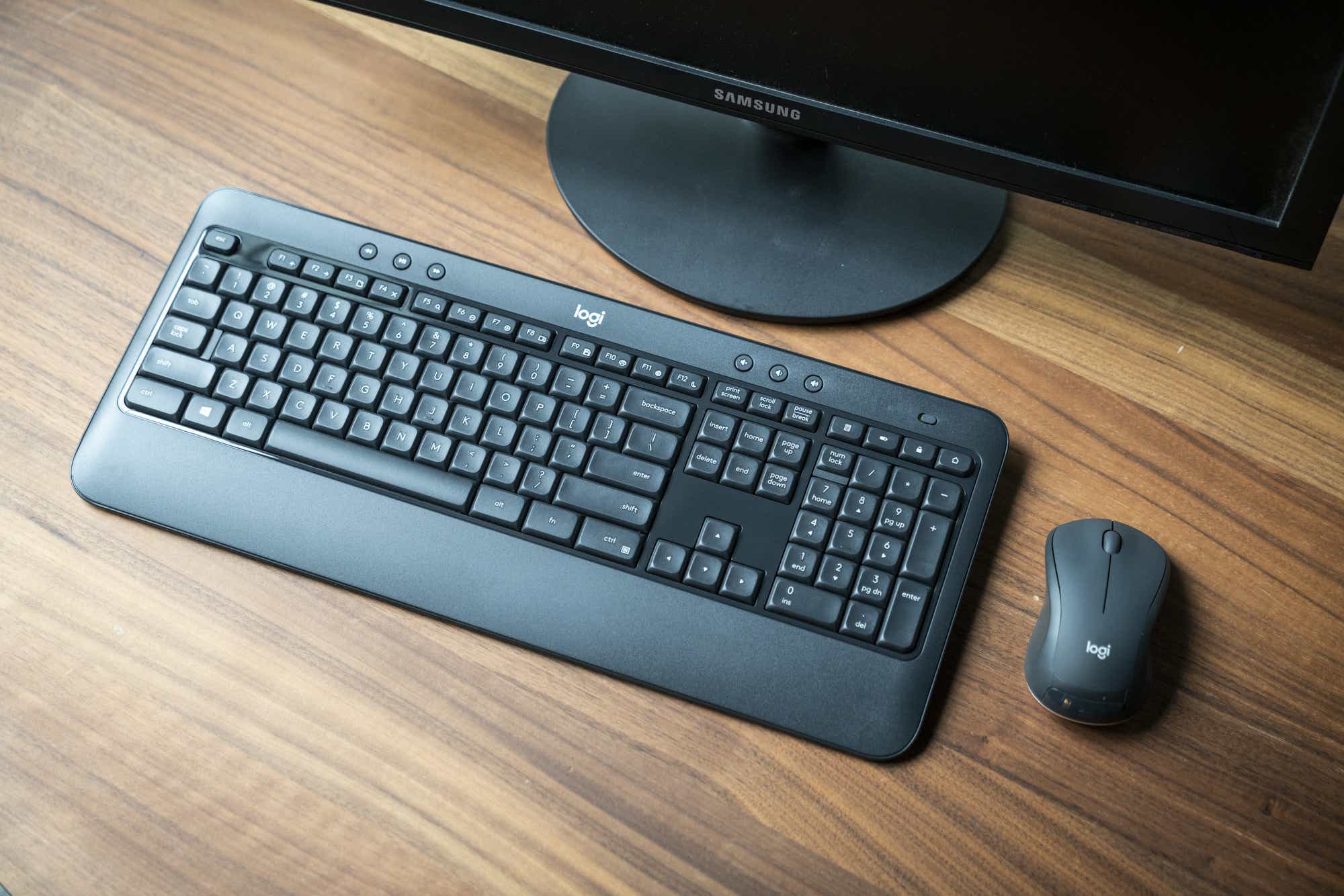
Pros
- Quiet yet tactile keys
- Programmable function keys and mouse gestures
- Roomy, comfy design
Cons
- Too bulky for mobile use
- Limited MacOS support
Logitech does it again with the MK540 Advanced combo. It might not have the convenience of backlighting that the K800 offers, but it hits all the other important features for productivity: a roomy layout, dedicated media buttons, a numpad, programmable keys, and tactile typing. In addition to all that, the keyboard comes with a decent wireless mouse, that is itself programmable, so you’re good to go.
Read our full
Logitech MK540 Advanced Wireless Keyboard and Mouse Combo review
Razer BlackWidow V3 Pro – Best wireless gaming keyboard
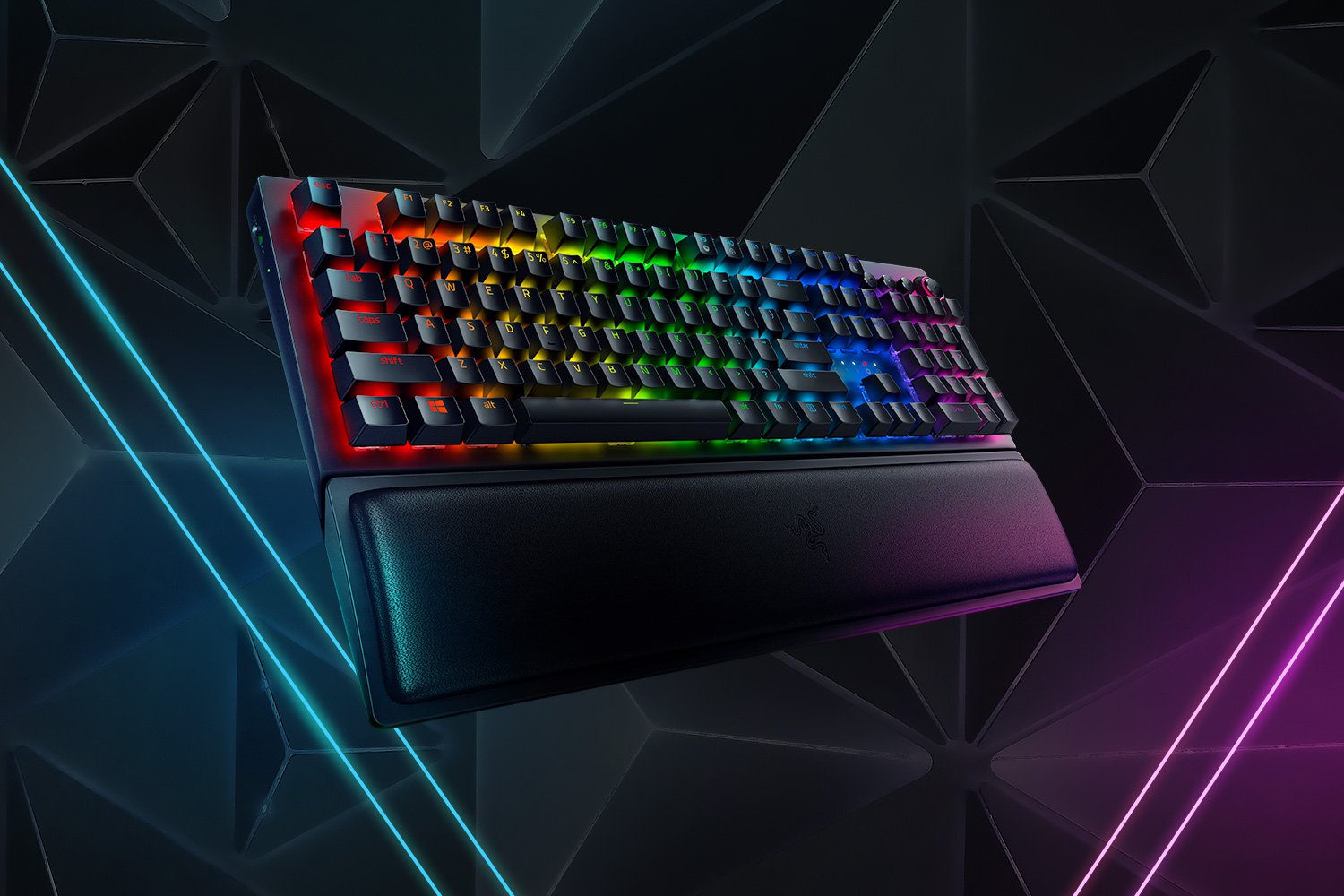
Pros
- Super-smooth switches
- Great media controls
- Comfy wrist rest
Cons
- Expensive
- Keycaps are a little cheap
For a long time, Corsair’s K63 has been our pick for best wireless gaming keyboard. We still like that keyboard a lot, but after recently reviewing the Razer BlackWidow V3 Pro, we’ve found a new favorite. It’s got everything you’d want from a gaming keyboard: full-size layout, mechanical switches, RGB, a wrist rest, a volume wheel—and the convenience of a wireless connection. Yes, it’s also pretty pricey, as premium products often are. That leaves the K63 as a still-very-respectable lower-priced alternative.
Read our full
Razer BlackWidow V3 Pro review
Redragon K596 – Best ultra-budget wireless gaming keyboard
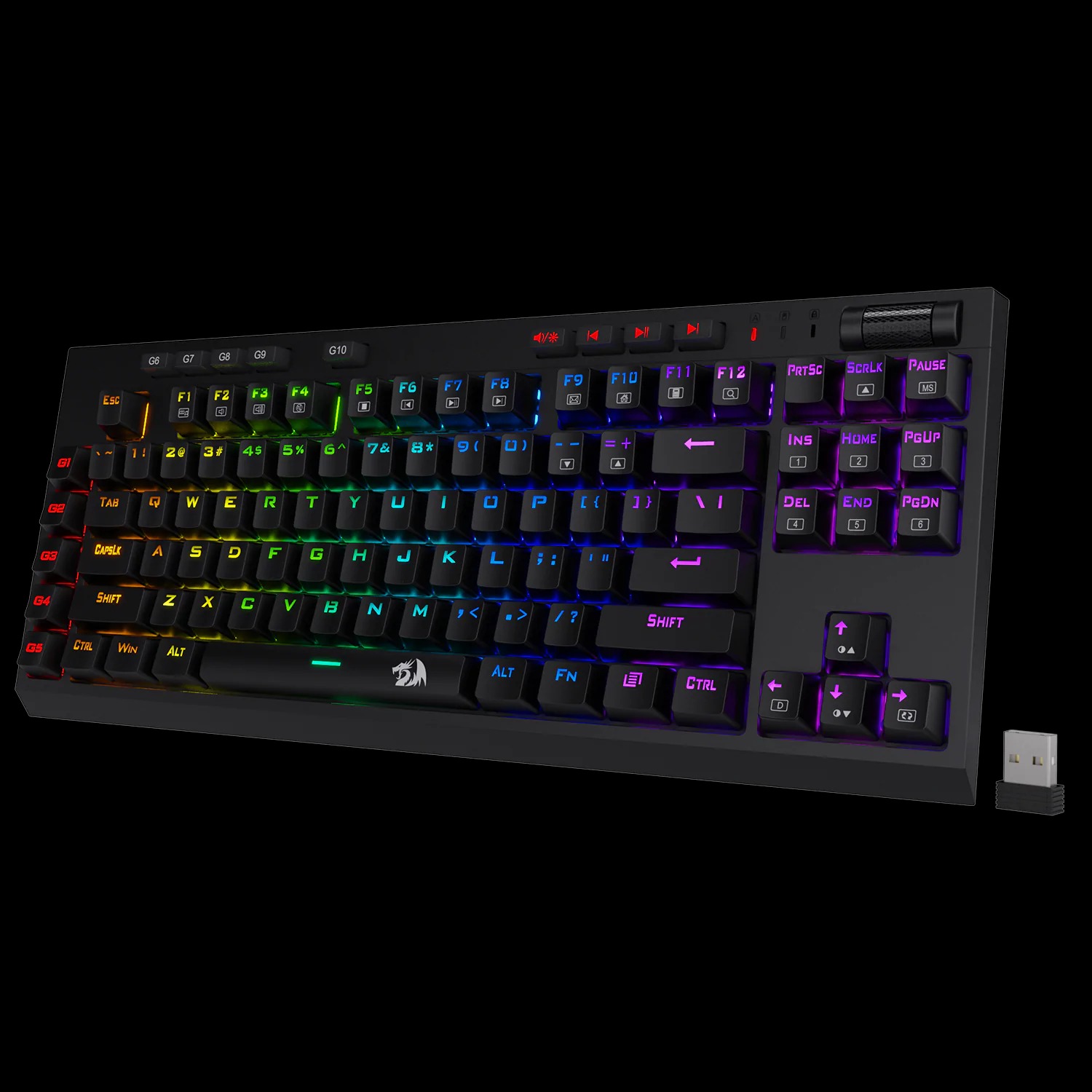
Pros
- Low price
- Included wrist rest
- Long battery life
- Volume wheel
Cons
- Ugly keycaps
- Can only program G keys
- No Bluetooth
The Redragon K596 is a fully wireless mechanical gaming keyboard packing many of the features you’d expect from a premium model. While the K596 isn’t amazing in any one particular area, at this price it doesn’t have to be. It covers all of the basics you would want from a wireless keyboard such as programmability, per-key RGB, volume wheel, macro keys, and a magnetic wrist rest. In contrast to the ballooning prices of modern gaming keyboards, the Redragon K596 represents a fantastic value.
Read our full
Redragon K596 Wireless Keyboard review
Logitech MX Keys Mini – Best wireless keyboard for travel
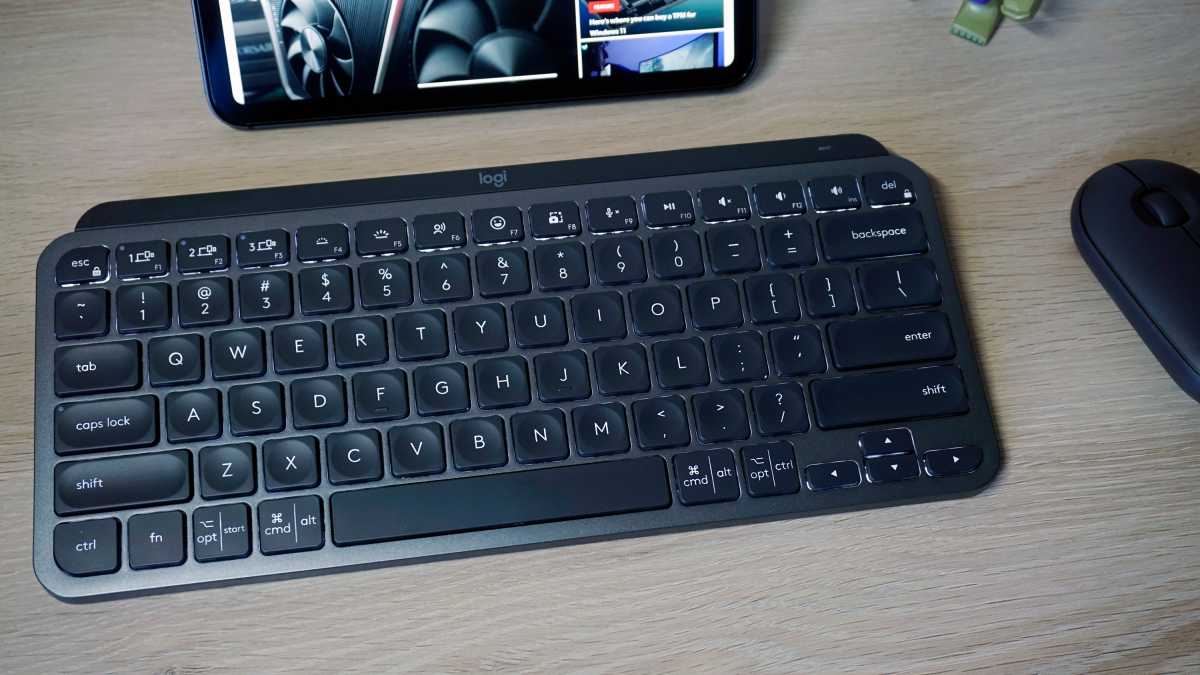
Pros
- Tiny size
- Great typing experience
- Customizable controls
- Multi-device pairing
Cons
- High price
- No riser feet
Don’t let the relatively high price scare you off. The MX Keys Mini is probably the best compact wireless keyboard around. It’s small but mighty—super comfortable to type on, offers a semi-customizable layout, supports multi-device switching, and more. If you want to work on the go, this board is not only an easy pack, it easily earns its keep by deftly standing out from others in its class.
Read our full
Logitech MX Keys Mini review
Logitech Casa – Best all-in-one travel option
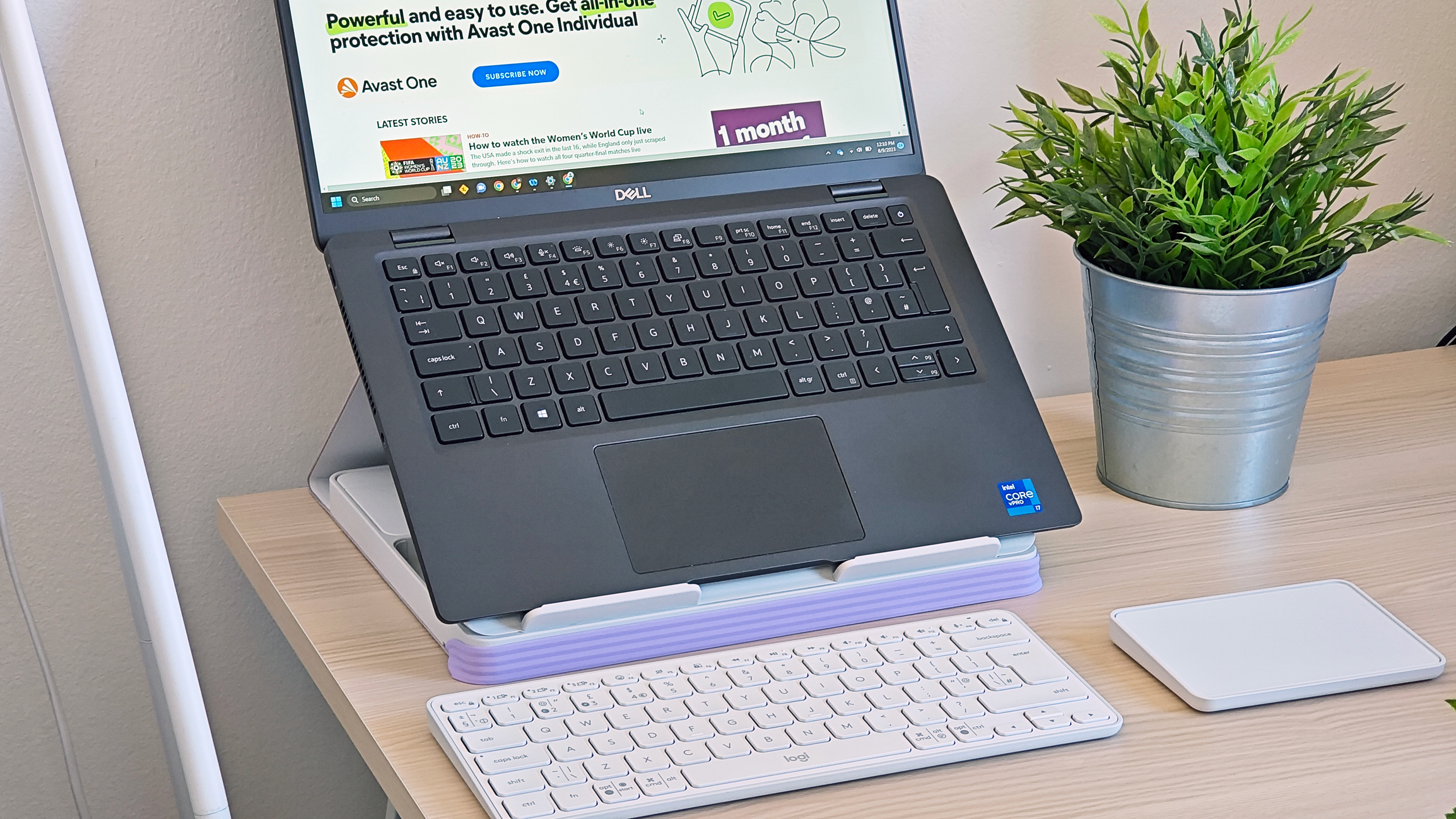
Pros
- Clever, aesthetically pleasing design
- Excellent battery life
- Range of remappable keys
- Makes working-from-home more ergonomic
Cons
- Not travel friendly
- Expensive
If you need something a little more comprehensive for your travel needs, Logitech’s Casa might just hit the spot. It’s a keyboard and touchpad set that also come in a swanky bento-style case, which doubles as a stand that significantly elevates your laptop. As an all-in-one solution for those who want to set up an office-style workstation on the go, it’s a pretty neat little package. It is on the pricey side, though — for the same price you could get a laptop stand, keyboard, and touchpad and save a bit of dough, albeit without the neat travel-friendly design.
Read our full
Logitech Casa Pop-Up Desk review
Keychron Q1 Pro – Best high-end mechanical keyboard

Pros
- Great hardware
- Excellent wireless performance
- Unbeatable value
Cons
- Bluetooth only wireless
This wireless update to Keychron’s best-in-class Q series has everything: a full aluminum case, hot-swap sockets and VIA programming for customization, PBT keycaps, and multi-device Bluetooth pairing. It’s equally at home with Mac or Windows users, and shockingly, it’s less expensive that a lot of of the boutique mechanical designs it’s aping. Not that it’s cheap, mind you, but if you want a wireless mech with every possible bell and whistle (except 2.4GHz wireless), this is it. For a nearly-identical keyboard with a few stylistic differences, you can check out the OnePlus 81 Pro.
Read our full
Keychron Q1 Pro Keyboard review
Keydous NJ80-AP – Best typing experience

Pros
- Amazing typing experience
- High-quality parts
- Bluetooth and 2.4GHz wireless
- Long battery life
Cons
- Clunky software
- Plastic case
- A bit heavy
We’ve reviewed a lot of keyboards at PCWorld, and this one has the best “feel” of any of them. If you spend hours a day typing, then the high-quality keycaps, exotics switches, and classy components like a brass deck plate and interior foam will make your fingers feel like they’re at a day spa. The plastic case is a bit of a let-down and the customization software is clunky, but there’s no better mech on the market for pure typing performance. And a nice bonus: Wireless comes in both Bluetooth and 2.4GHz flavors.
Read our full
Keydous NJ80-AP wireless mechanical keyboard review
K780 Multi-Device Wireless Keyboard – Best full-size multi-device option
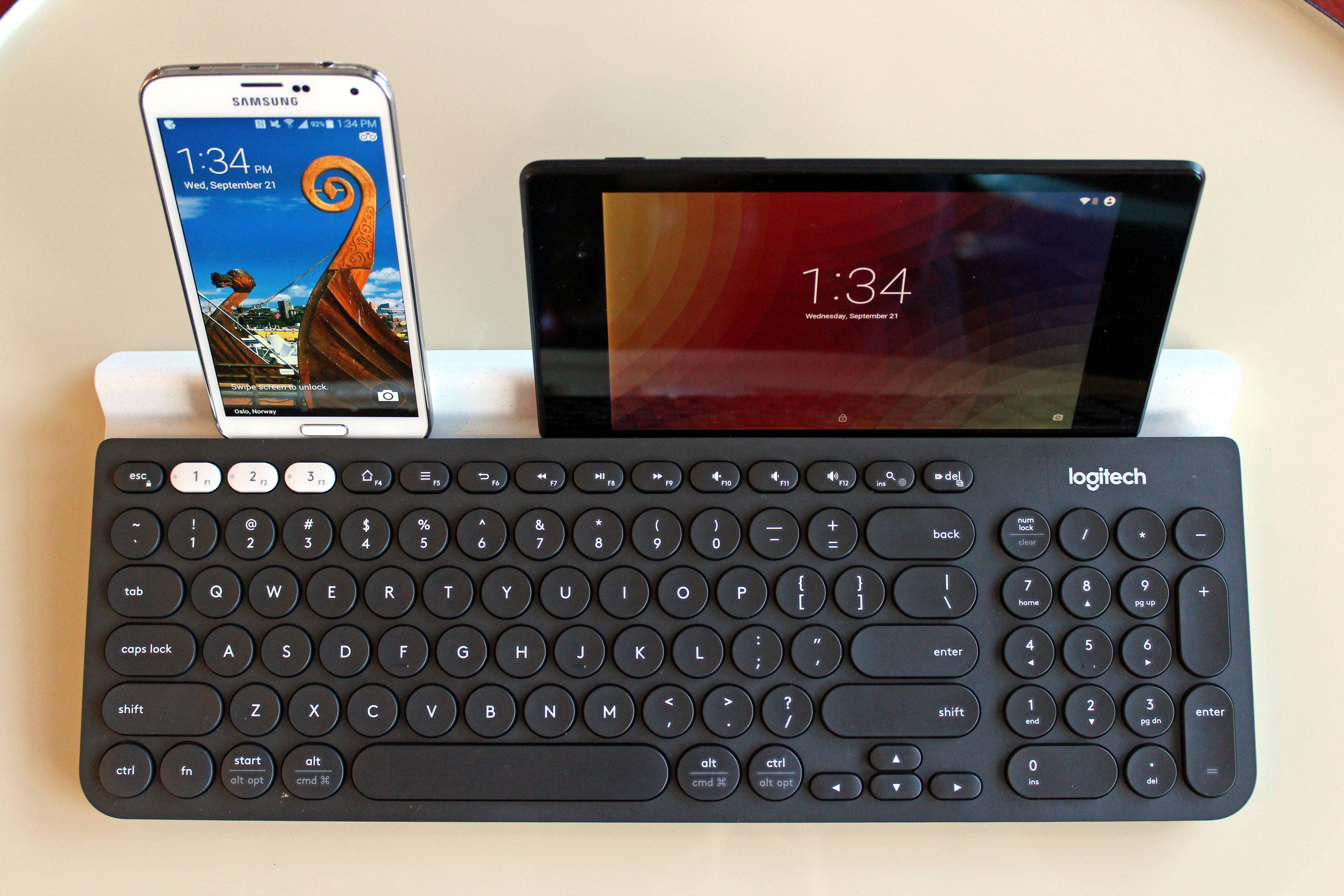
Pros
- Works with all major platforms
- Can toggle between three paired devices
- Quiet keys with great travel
Cons
- Not built for portability
If you like the convenience of a Bluetooth keyboard that can switch among different devices, but don’t require the compact layout of the MX Keys Mini, Logitech’s K780 Multi-Device Wireless Keyboard promises to be the one keyboard to rule all your computing gizmos. Indeed, it’s fully compatible with Windows, Mac OS, Chrome OS, Android, and iOS for fast and effortless switching between your computer, smartphone, and tablet. It also costs a good deal less than the MX Keys Mini, and offers a roomy layout with a numpad.
Read our full
Logitech K780 Multi-Device Wireless Keyboard review
Logitech Ergo K860 – Best ergonomic wireless keyboard
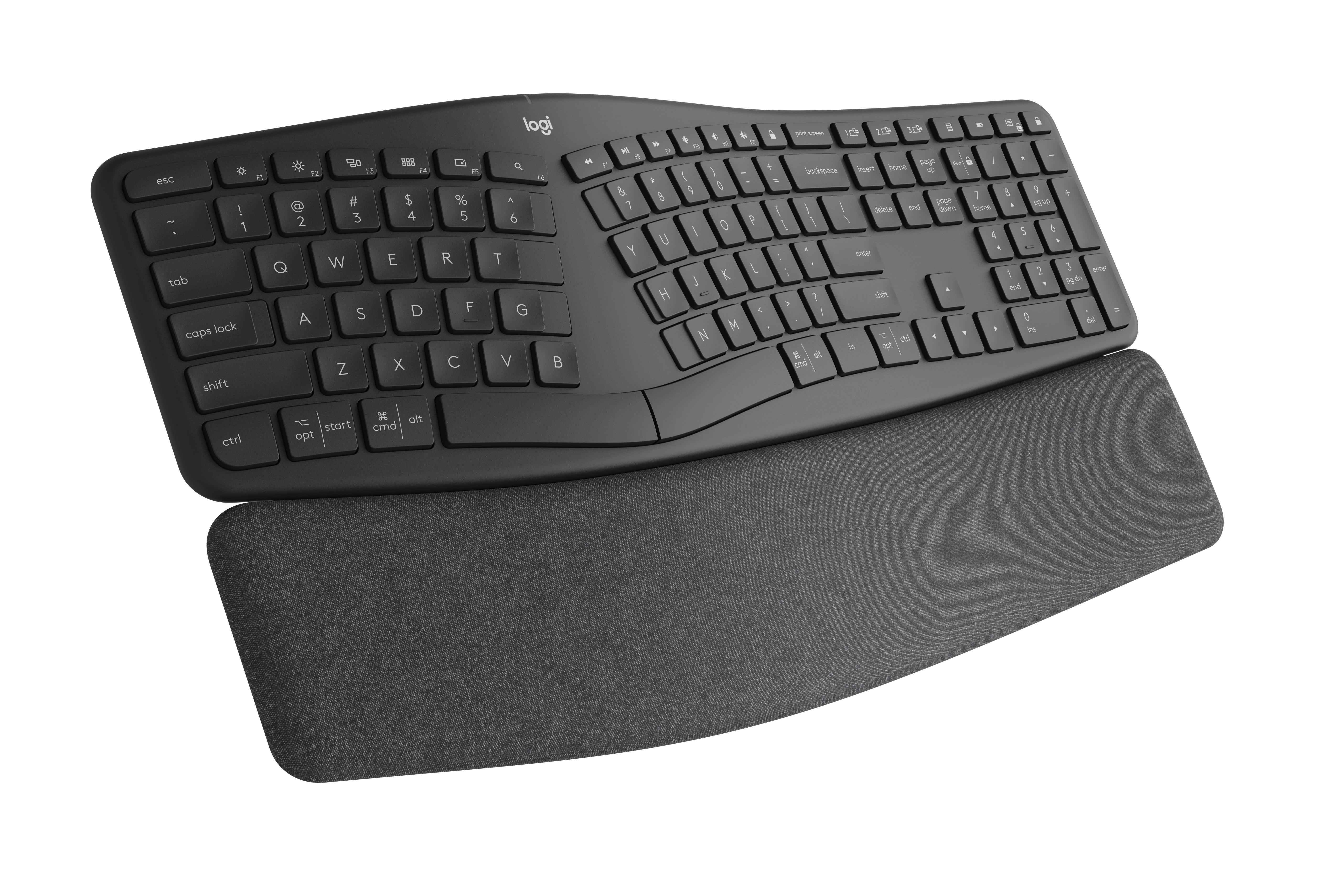
Pros
- Curved and split ergonomic design
- Comfortable wrist support
- Palm raise feature lets you adjust height for sitting or standing
Cons
- Requires some time to get used to split design
- Expensive
Logitech’s Ergo K860 has finally conquered our skepticism about awkward ergonomic keyboards. In the course of our review, there was a marked improvement in typing comfort and reduced muscle tension, all without sacrificing productivity to a steep learning curve. It’s a little expensive compared to a conventional wireless keyboard, but if you’re struggling with comfort, the K860 is the only ergonomic keyboard we’d heartily recommend. If you need a more compact, affordable version of Logitech’s curvy keyboard design, check out the Wave Keys instead.
Read our full
Logitech Ergo K860 review
How we test wireless keyboards
It was hands-on all the way with our keyboard testing. We spent at least one full workday typing exclusively on each model we tested, with follow-up time to allow for a learning curve. We assessed the primary typing experience: key design, typing feel, and even noisiness. We also tried the secondary features: hotkeys, switches and dials on multi-platform models, and even the ability to adjust the angle or other comfort characteristics.
We considered the size, weight, and durability of each model against its purpose—whether it was designed to be portable or desk-bound, and compact or fully featured. For instance, we balance the versatility of multi-platform models like Logitech’s K780 against its performance as an actual keyboard you need to use everyday (and in this case, it wins on all counts).
How to shop for a wireless keyboard
You’re going to use this keyboard every day, so make sure it fits your typing habits and your needs. Here’s what to keep in mind as you shop.
Size: A model that will always sit on your desktop can be bigger and heavier, and usually some other advantages some with that. As more of us carry laptops or tablets, however, we’ll look for models that are compact or portable. These will sacrifice some features but be easier to take with you.
Keys: Look for keys that are sculpted and spaced for typing comfort. This is why we encourage trying before buying: We’ve had very different experiences with traditional keys vs. chiclet-style vs. flatter key designs, and it’s surprising how little things like the texture or the amount of dimple will make or break a choice. Most mainstream keyboards use membrane technology, which is adequate for most users, but heavy-duty users and gamers will likely prefer keyboards with mechanical switches (which are not reviewed here). Windows hotkeys, or even programmable keys, are great bonuses, especially for power users.
Adjustability: Some keyboards offer no adjustment for angle or height. Look for models with adjustable legs or feet. We haven’t included ergonomic models in this round of reviews.
Battery needs: All wireless keyboards use batteries. Check closely for the type and number of batteries you need, and whether a starter set is included. We note the vendors’ specified battery life in each review.
FAQ
1.
What’s the difference between a Bluetooth keyboard and a wireless keyboard?
Wireless keyboards connect to a PC in one of two ways: via Bluetooth or a USB receiver. Wireless keyboards that connect via a USB receiver or dongle can only connect to a computer or device if it has a USB port. Bluetooth connectivity on the other hand does not require any dongle or extra receiver and can therefore easily connect to other Bluetooth-enabled devices without the need for any ports. Additionally, Bluetooth keyboards tend to cost a little more but also offer longer battery life.
While shopping, you may find that older devices do not support Bluetooth. However, if you need a keyboard to work across different platforms on newer devices, a Bluetooth-enabled model is the way to go.
2.
Can a laptop be used with a wireless keyboard?
Yes, you can use a wireless keyboard with a laptop without issue. Depending on whether you are using a wireless USB dongle keyboard or a Bluetooth keyboard, you just need to connect to the laptop and then you are good to go. This is true if you wish to connect a wireless keyboard to your tablet or 2-in-1, as well.
3.
Do wireless keyboards need special batteries?
Usually wireless keyboards are powered using either rechargeable or disposable batteries. Wireless keyboards with rechargeable batteries will just need to be plugged into an external power source such as a computer or wall outlet when the battery is low. Otherwise, wireless keyboards with disposable batteries will need those batteries to be replaced when they die. The most common types of batteries these keyboards use will be either AA or AAA alkaline batteries.
4.
Are wireless keyboards good for gaming?
Wireless keyboards are a fantastic option for most people, but they have a few limitations when it comes to gaming. Wireless keyboards can produce some slight latency issues between the keystroke being made and it being registered by your computer. This lag can be especially frustrating when playing games that require fast reaction times or in competitive environments — the latency may in some instances lead to a competitive disadvantage.
That being said, wireless technologies have improved immensely in recent years and any lag or interference issues are becoming extremely rare with the latest technology. Most casual gamers will be just fine with a wireless keyboard — opt for 2.4GHz wireless over Bluetooth for the most reliable results. You can minimize interference issues by keeping other wireless devices away from your wireless keyboard, as well.
